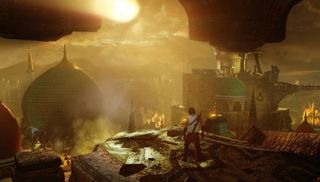
Article by Nathan Ditum.
For a simple man who enjoys the outdoors and jumping off things, life has been increasingly complex for the Prince Of Persia. Brilliantly resurrected in 2003's Sands Of Time, his fortunes wavered as the trilogy that followed plunged into dark, adolescent tedium. A bold new direction looked briefly enticing in 2008 - until it turned out the direction was to a place full of cel-shading and wobbly combat - while the bland post-film Forgotten Sands looked like a tie-in that couldn't afford the rights to Jake Gyllenhaal's face.
Since then there have been various whispers. A screenshot for a grimy historical take called POP Zero 2, which very much suggests a unseen POP Zero 1, and a concept trailer for a project called Osiris have emerged in the last year. Most recently prototype screens have emerged from Portsmouth based Climax Games, though the project is apparently not going ahead. The official line is that the series is “paused” but it sounds, more than anything, like Ubisoft doesn't know exactly what it wants. And that's all right, because we're going to tell them.
The Prince
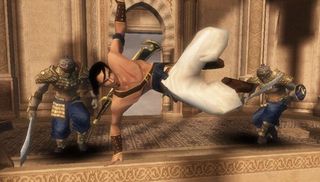
Of course the Prince has to be there, otherwise we're staring down the barrel of an empty, slow-moving game simply called “Persia” featuring a lot of sand. I'm more concerned about his personality which, despite his centrality to the series, has shifted between various reboots from try-hard angsty adventurer to rag-wrapped desert wanderer. As with many things, Sands Of Time had this more or less straight - it's important to the loftier aims and likeability of the game that he be young, a little naive and not unbearably royal. Before giving him edgy eye shadow and a Nolan North personality strip, Ubisoft had a Prince who was the perfect thematic match for its game of wonder, exploration and magic.
The Orient
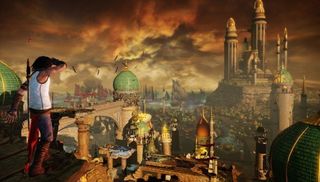
Speaking of wonder, exploration and magic, this is what the world should be designed to convey. If Ubisoft's historical rooftop stabber Assassin's Creed exists to give us realism, grimy bustle and a suspicious hay surplus, then Persia should be hyper-real, a glowing land of impossible enchantment and mystery. It should, in short, be everything that Persia stood for in the popular imagination for centuries, epitomised most obviously by the entwined tales of the Arabian Nights. Junk the mad sand ruins, underground caves and anything else that isn't shimmering silk drapes, fabulous desert luxury or - go on then - nicely rendered sand. As the picture above shows, the version of the game proposed by Climax seemed to be heading in the right direction so, uh, let's hope Ubisoft turned them down because they weren't enchanting or mysterious enough.
Arabian spring
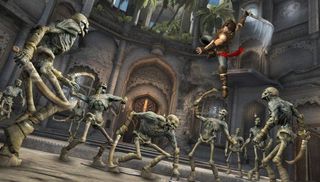
If the star and setting of Persia have shifted over the years, then a sense of acrobatic freedom is perhaps its immutable foundation. In other words - ever since Jordan Mechner wove his rotoscoped brother into the original game's unusually realistic animation the Prince's leaping, ledge-grabbing and skittering fleet-footedness have been the series' unchanging thing . Assassin's Creed is again a point of reference here, as its parkouring-through-the-past business is clearly built on Persia's shoulders. But - and we go back to the exploration and wonder - the Prince must be more agile and graceful than the assassins, whose games are complex and packed with activity. The central pleasure of Prince Of Persia has always been movement and momentum, and that's what any follow-up must capture, that sense of fluidly life-like kineticism. Also, he should probably be wearing slippers, like, the whole time.
Combat
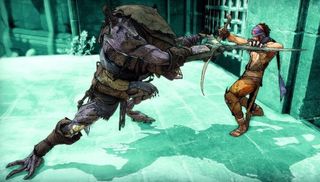
An area in which the series hasn't really been comfortable since its 2D stick-waving days. Sands Of Time was too laborious and the 2008 reboot's experimental anti-button mashing was, well, rubbish. Given that 2D stick-waving really isn't on these days (even in private) fighting is a key area of reinvention for the prospective Prince. It should be secondary to his acrobatics while incorporating elements of his manoeuvrability, and it should make fights against small groups of guards possible without giving the impression that the Prince is a hardened warrior. This sounds tricky, admittedly, which is why it's a good job we're not the ones who have to make it. Here's a start, though: think Batman: Arkham City combined with a third-person Dishonored and you're, oooh, 17% there. The rest should be easy.
The biggest gaming news, reviews and hardware deals
Keep up to date with the most important stories and the best deals, as picked by the PC Gamer team.
Magic
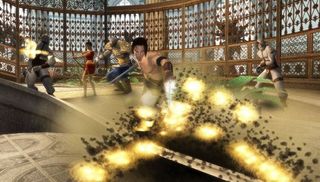
The Prince's time-wrangling shiv served as a conceited UNDO button for Prince of Persia's convoluted narrative, but in one stroke it also alleviated the inevitable frustration of falling to one's death in a third person platformer. Even the nimblest third-person camera can make a deadly jump look just-about-doable, so the PoP's use of magic provided a very welcome safety net.
More than that, the series' use of magic is another a main point of differentiation with Assassin's Creed and a crucial underpinning for the Persia world - it's fantastical, not fastidious. The time-shifting abilities of the Sands trilogy intersect beautifully with its platforming and combat, and play wonderfully into the ancient Middle Eastern atmospherics. Any potential successor needs something in the same vein, a toolset that adds even more flair to those light-footed acrobatics and more heft to the shimmering swordplay. Something that, crucially, isn't magic carpets, which is the only thing I can think of.
This is where you come in. The Prince has his dagger, his wits, and evil personalities to contend with, what would you add to spice up a PoP sequel?
PC Gamer is the global authority on PC games—starting in 1993 with the magazine, and then in 2010 with this website you're currently reading. We have writers across the US, Canada, UK and Australia, who you can read about here.
Most Popular

